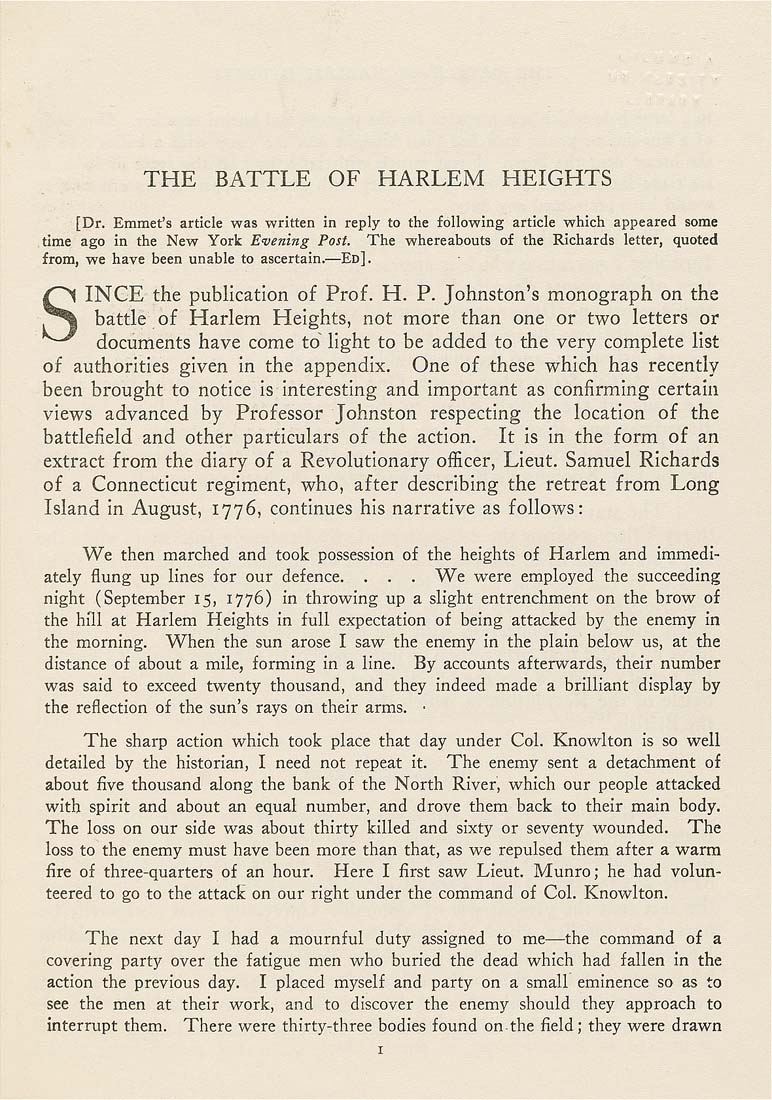THE BATTLE OF HARLEM HEIGHTS
[Dr. Emmet's article was written in reply to the following article which appeared some
time ago in the New York Evening Post. The whereabouts of the Richards letter, quoted
from, we have been unable to ascertain.—Ed].
INCE the publication of Prof. H. P. Johnston's monograph on the
battle of Harlem Heights, not more than one or two letters or
documents have come to" light to be added to the very complete list
of authorities given in the appendix. One of these which has recently
been brought to notice is interesting and important as confirming certain
views advanced by Professor Johnston respecting the location of the
battlefield and other particulars of the action. It is In the form of an
extract from the diary of a Revolutionary officer, Lieut. Samuel Richards
of a Connecticut regiment, who, after describing the retreat from Long
Island in August, 1776, continues his narrative as follows:
We then marched and took possession of the heights of Harlem and immedi¬
ately flung up lines for our defence. . . . We were employed the succeeding
night (September 15, 1776) in throwing up a slight entrenchment on the brow of
the hill at Harlem Heights in full expectation of being attacked by the enemy in
the morning. When the sun arose I saw the enemy in the plain below us, at the
distance of about a mile, forming in a line. By accounts afterwards, their number
was said to exceed twenty thousand, and they indeed made a brilliant display by
the reflection of the sun's rays on their arms. '
The sharp action which took place that day under Col. Knowlton is so well
detailed by the historian, I need not repeat it. The enemy sent a detachment of
about five thousand along the bank of the North River, which our people attacked
with spirit and about an equal number, and drove them back to their main body.
The loss on our side was about thirty killed and sixty or seventy wounded. The
loss to the enemy must have been more than that, as we repulsed them after a warm
fire of three-quarters of an hour. Here I first saw Lieut. Munro; he had volun¬
teered to go to the attack on our right under the command of Col. Knowlton.
The next day I had a mournful duty assigned to me—^the command of a
covering party over the fatigue men who buried the dead which had fallen in the
action the previous day. I placed myself and party on a small eminence so as to
see the men at their work, and to discover the enemy should they approach to
interrupt them. There were thirty-three bodies found onthe field; they were drawn
|








